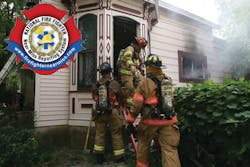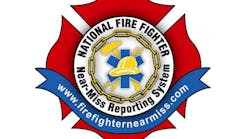The continued funding of the National Fire Fighter Near-Miss Reporting System has officially been rejected and has not been awarded through the Fire Prevention and Safety Program of DHS. Since the program's inception, DHS/FEMA has provided $7 million to this program. The Near-Miss program has been an integral part of a system of most national fire service organizations that has reduced firefighter death and injury to the levels we see today-all funded through the AFG process.
NOTE: Due to the rejection, the National Fire Fighter Near-Miss program will end this Friday, Sept. 28 when the current grant period officially ends.
What's weird is that the near-miss program did not score high enough and that the "peer" reviewers did not see the value of the program - as part of a firefighter safety system.
Really weird.
OK - I do get it that we -- the fire service or any organization -- should never expect any federally funded program to last forever. I also get that, perhaps the program should have found alternative "independent" funding at this point. And I also get that it's one of those programs that as long as "someone else" is funding it -- the fire service loves it -- but as soon as it loses funding, the fire service focuses on other interests. And more importantly, I definitely get that there are some very poor fire department's that can barely exist...and the grants have made a difference in providing the most basic of services delivered by both career an volunteer firefighters. I totally get all that.
What I don't get is why any "peer" would not support the near-miss program - a data based program that supports and assists every firefighter. And they not recommend that it be continued? Why would any "peer," who carefully reviewed and understood the history, and who had a clear understanding of the program ...would score it so low as to not have it funded? It's kinda weird.
- Was it how the funding was being spent?
- Was it that the data was producing information we didn't want to know or hear about?
- Was it the organization or the people who ran the near-miss program?
- Was it that the peer reviewers were not fully aware of the facts related to the program?
The federal fire grant program is run by some top of the line people - many veteran fire service folks who do "get it," and the peer process consists of fire folks who want to do the right thing...and we know the data was being used by numerous organizations both local, state and national.
So what was it? What caused it to be scored so low?
What's also weird is how some of this stuff works...for example, why were the following grants awarded in the recent past?
- $700,000.00 for "recruiting" in a volunteer fire department that protects 10,000 people in one square mile
- $400,000.00 for "recruiting" in a fire district that protects 26,000 people in six square miles
- $1,700,000-plus for recruitment as well as fire equipment to one single volunteer fire department that has career personnel in their area on duty 24/7 - and in an area that has more fire apparatus available per square mile than perhaps anywhere in the United States?
The tax-funded grant awards are not a secret -- it's all public information that you and I are all well aware of.
But what doesn't make sense is why grants described above ARE awarded and funded---grants that have very little impact to the big picture, but yet the "National" Fire Fighter Near-Miss Reporting System wasn't. It's just weird. RIP.







